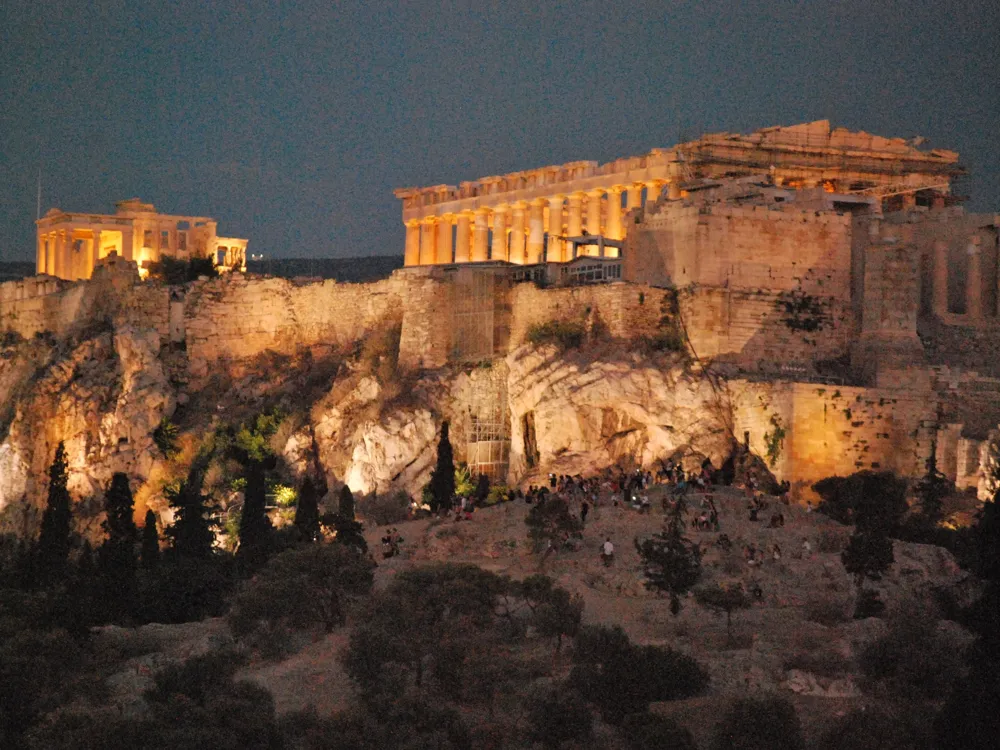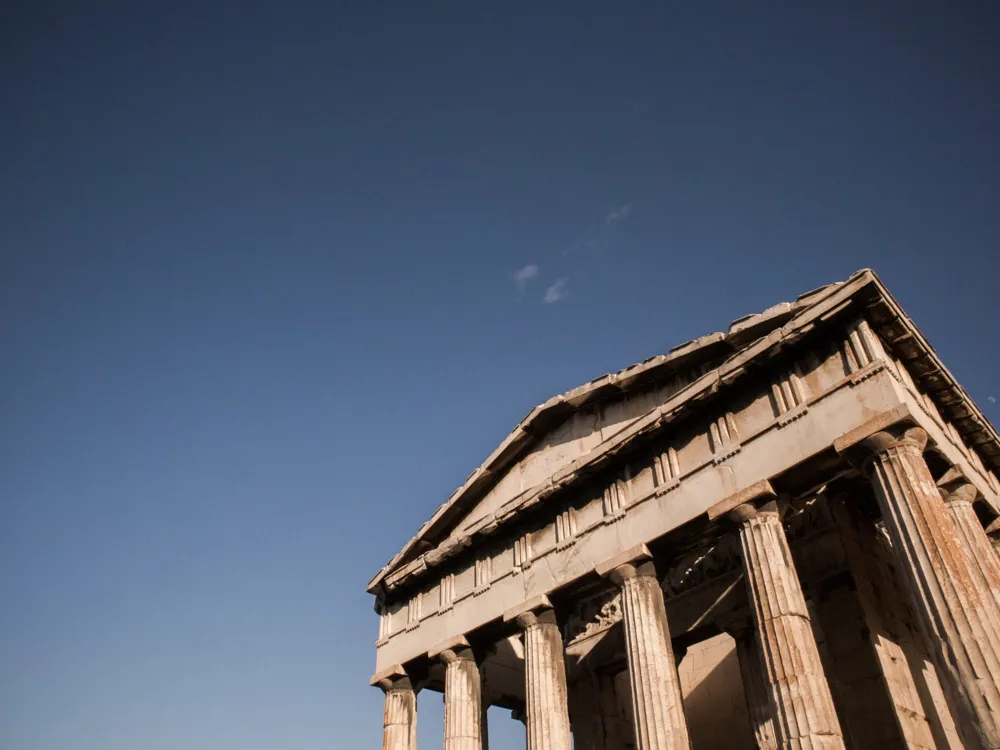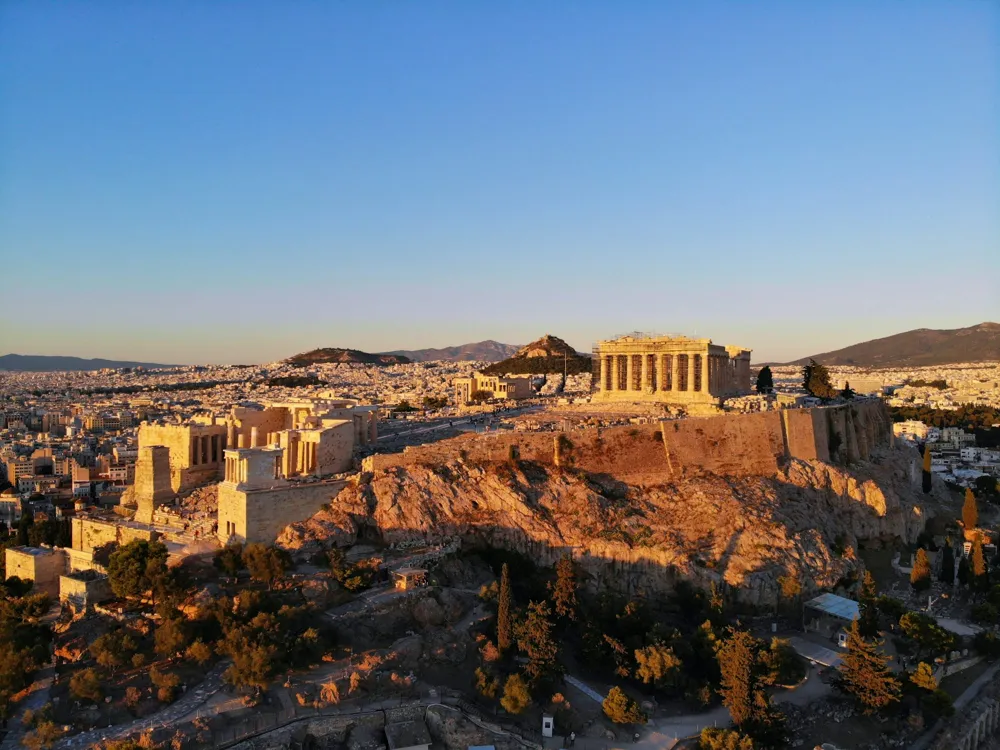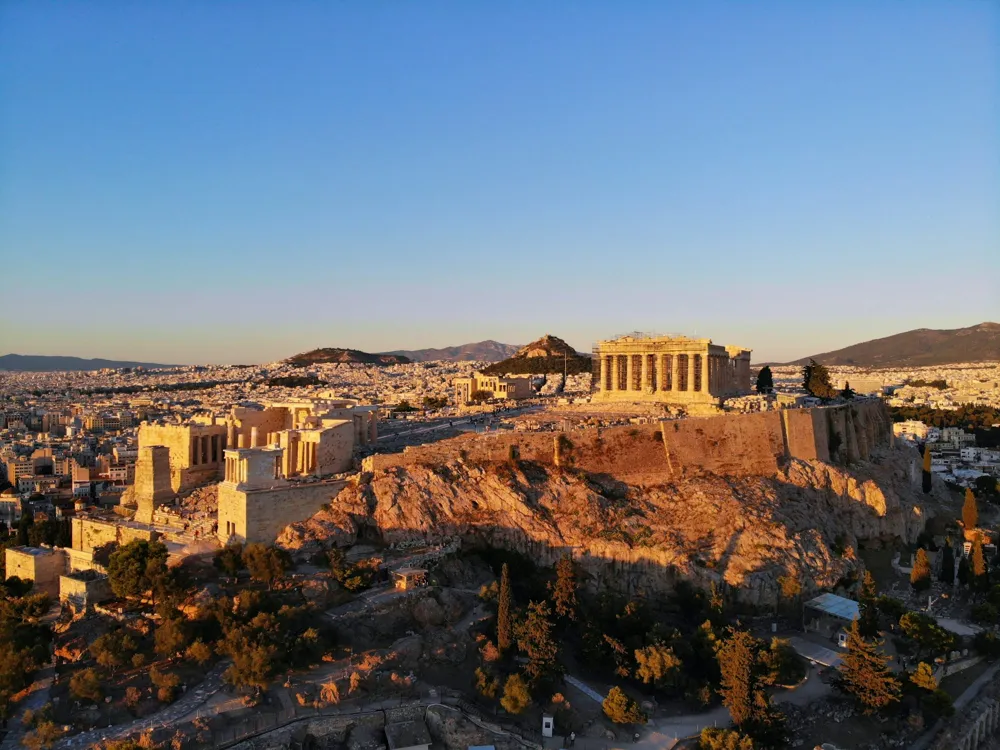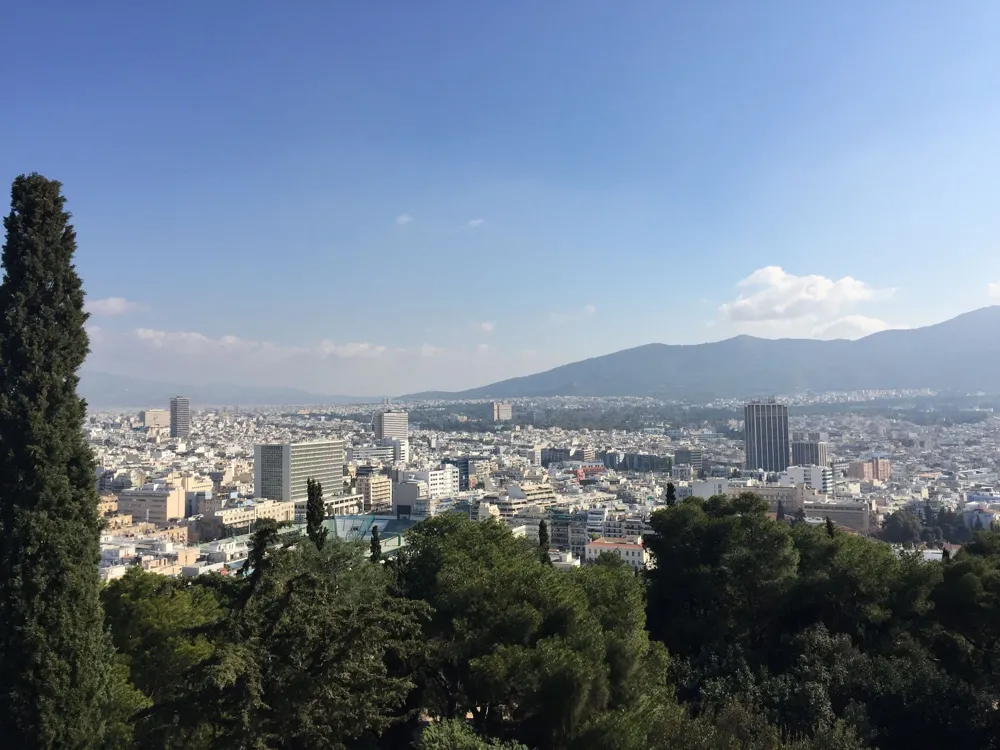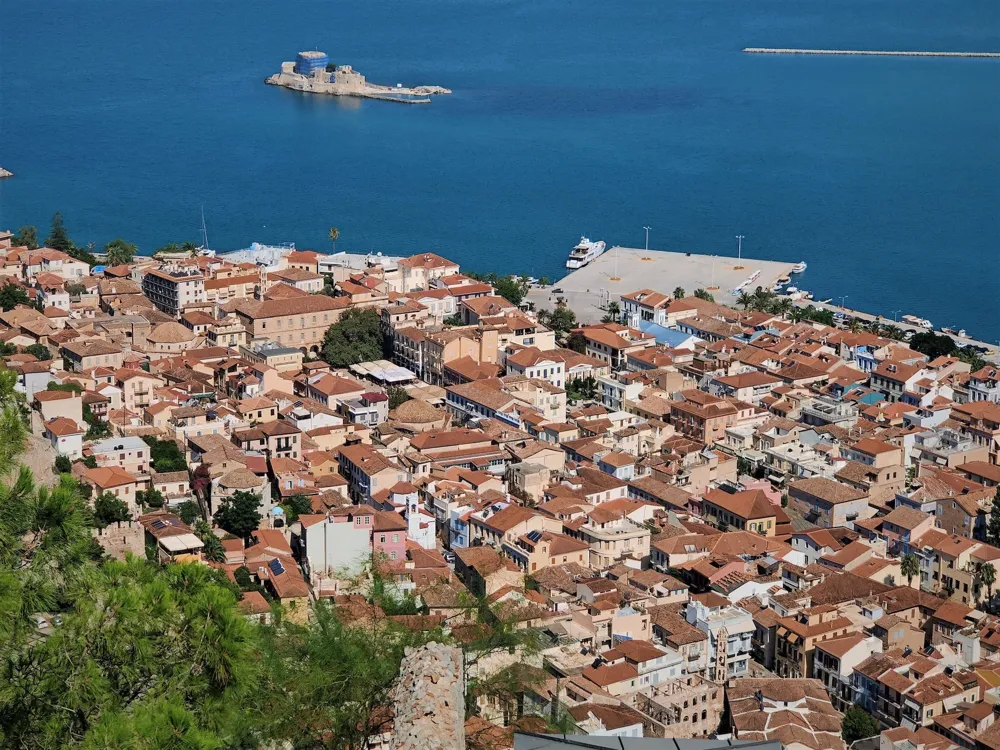The Ancient Agora of Athens, a testament to the majesty of ancient Greek civilization, stands as a symbol of the popular morality, philosophical study, and cultural excellence that flourished in Athens. This major point, located at the heart of ultramodern Athens, was the focal point of public life in ancient times. It served as a mecca for political discourse, marketable conditioning, and social gatherings. The Agora's origin dates back to the 6th century BC and has witnessed the rise and fall of numerous societies, each leaving its own unforgettable mark on its geography. The architectural splendour of the Ancient Agora of Athens frames the cultural and intellectual meridian of classical Greece. The Agora wasn't only a centre for political and social exertion but also a show of architectural invention and aesthetic beauty. The point features a mix of different architectural styles, reflecting the changes in Athenian society and the influences of colourful ages. Before visiting the Ancient Agora, it's judicious to probe its history and significance to completely appreciate its artistic and historical environment. Check the opening hours and ticket prices, as these can vary seasonally. It's also salutary to download or buy a chart of the Agora to navigate the point efficiently. Given the extensive nature of the point, comfortable walking shoes are a must-have. The Agora involves a fair amount of walking on uneven shells. Dress appropriately for the rainfall, as most of the point is outside and Athens can be relatively warm in the summer months. To enrich your experience, consider hiring an original companion or using an audio companion. Guides can give in-depth information about the history and architecture of the Agora, enhancing your understanding and appreciation of the point. The Stoa of Attalos, housing the Agora Museum, is a must-visit. The museum exhibits a collection of artefacts found in the Agora, providing insights into the everyday lives of ancient Athenians. For photography enthusiasts, the Ancient Agora offers numerous picturesque spots. The Temple of Hephaestus, in particular, provides a stunning backdrop, especially during sunrise or sunset. Remember to respect the site's rules regarding photography. The Ancient Agora of Athens is easily accessible by colourful means of transportation. The closest metro station is Thissio on Line 1, which is just a short walk down from the Agora. Alternately, Monastiraki station, served by both Line 1 and Line 3, is also hard. For those preferring to travel by machine, several lines stop close to the Agora. Taxis are readily available throughout the megacity and can be an accessible option, though business in Athens can be changeable. For callers staying in central Athens, walking to the Agora is a feasible and pleasurable option, allowing one to experience the megacity's vibrant thoroughfares and literal air. Read More:Overview of Ancient Agora of Athens
Throughout its history, the Agora was more than just a business. It was the heart of the Athenian Republic, where citizens gathered to bandy and form vital opinions about the megacity-state. The point was also a melting pot of religious and artistic conditioning, showcasing a plethora of tabernacles and stages devoted to colourful gods and goddesses. The Agora's influence extended beyond the boundaries of Athens, impacting the broader Hellenic world and laying the foundation for Western civilization's popular principles.
Archaeologically, the Ancient Agora of Athens is a treasure trove, offering perceptivity into the diurnal lives of Athenians. Excavations have exhumed significant structures such as the Stoa of Attalos, which now houses the Agora Museum, and the well-saved Temple of Hephaestus, one of the finest exemplifications of Doric architecture. Other notable discoveries include statues, crockery, and eulogies that paint a pictorial picture of life in ancient Greece. The Agora's layout, with its public structures and private houses, reflects the elaboration of Athenian society through the centuries, from the classical period to Roman times.Architecture of Ancient Agora
One of the most prominent structures in the Agora is the Stoa of Attalos, a magnific illustration of Hellenistic architecture. This two-story structure, reconstructed in the 1950s, first served as a covered walkway and meeting place. It features a series of columns and a façade that combines doric and ionic rudiments, symbolising the emulsion of strength and fineness. Outside, the Stoa now houses the Agora Museum, displaying artefacts and puppets that recite the Agora's rich history.
Another architectural phenomenon is the Temple of Hephaestus, standing atop Agora's western hill. This well-saved tabernacle, devoted to the god of metalworking and artificer, exemplifies classical Doric armature. Its sturdy columns and detailed friezes depict scenes from Greek tradition, recapitulating the cultural mastery of the period. The tabernacle's strategic position and imposing structure reflect the reverence of artifice and assiduity in Athenian society.
The Agora also includes remnants of other colourful structures, each representing different architectural styles and literal ages. These include the Odeon of Agrippa, a large musical hall from the Roman period, and the intricate Church of the Holy Apostles, showcasing the transition from idolatry to Christian Athens. The different architectural rudiments of the Agora not only punctuate the cultural achievements of ancient Greece but also offer a chronological narrative of Athens' elaboration through the centuries.Tips When Visiting Ancient Agora
Plan Your Visit
Wear Comfortable Clothing
Hire a Guide or Use Audio Guides
Visit the Stoa of Attalos and Agora Museum
Photography Tips
How To Reach Ancient Agora
Ancient Agora
Athens
₹ 25,800 onwards
View athens Packages
Weather :
Tags : Historical Site
Timings : Tuesday - Saturday: 8:00 AM - 7:00 PM,
Monday: 11:00 AM - 7:00 PM
Entry Fee : Included in the ticket for Acropolis which costs EUR 30
Planning a Trip? Ask Your Question
Athens Travel Packages
View All Packages For Athens
Top Hotel Collections for Athens

Private Pool

Luxury Hotels

5-Star Hotels

Pet Friendly
Top Hotels Near Athens
Other Top Ranking Places In Athens
View All Places To Visit In athens
Faq on Athens
What is the Ancient Agora in Athens?
The Ancient Agora in Athens was the central marketplace and civic center of ancient Athens. It was a gathering place for citizens, merchants, and politicians.
When was the Ancient Agora built?
The Ancient Agora was established in the 6th century BCE, although its development continued over several centuries.
What was the purpose of the Ancient Agora?
The Ancient Agora served multiple purposes, including being a marketplace for goods, a venue for political gatherings and debates, a site for religious ceremonies, and a social hub for Athenian citizens.
What are some notable structures within the Ancient Agora?
Some notable structures include the Temple of Hephaestus, the Stoa of Attalos, the Bouleuterion (Council House), the Tholos, and the Odeon of Agrippa.
Who were allowed in the Ancient Agora?
The Ancient Agora was primarily open to male citizens of Athens. Women, slaves, and foreigners generally had limited access.
View athens Packages
Weather :
Tags : Historical Site
Timings : Tuesday - Saturday: 8:00 AM - 7:00 PM,
Monday: 11:00 AM - 7:00 PM
Entry Fee : Included in the ticket for Acropolis which costs EUR 30
Planning a Trip? Ask Your Question
Athens Travel Packages
View All Packages For Athens
Top Hotel Collections for Athens

Private Pool

Luxury Hotels

5-Star Hotels

Pet Friendly
Top Hotels Near Athens
Other Top Ranking Places In Athens
View All Places To Visit In athensFaq on Athens
What is the Ancient Agora in Athens?
The Ancient Agora in Athens was the central marketplace and civic center of ancient Athens. It was a gathering place for citizens, merchants, and politicians.
When was the Ancient Agora built?
The Ancient Agora was established in the 6th century BCE, although its development continued over several centuries.
What was the purpose of the Ancient Agora?
The Ancient Agora served multiple purposes, including being a marketplace for goods, a venue for political gatherings and debates, a site for religious ceremonies, and a social hub for Athenian citizens.
What are some notable structures within the Ancient Agora?
Some notable structures include the Temple of Hephaestus, the Stoa of Attalos, the Bouleuterion (Council House), the Tholos, and the Odeon of Agrippa.
Who were allowed in the Ancient Agora?
The Ancient Agora was primarily open to male citizens of Athens. Women, slaves, and foreigners generally had limited access.








